NEUNABER WET STEREO REVERB
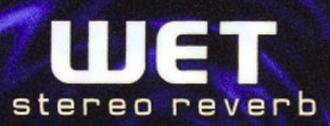
THE QUEST:
Once again we join the writer on another quixotic tone quest – this time in search of an excellent reverb pedal. I sallied forth, armed with the following criteria:
1. I needed a reverb to use with my non-reverb amps that could sound reasonably like an amp’s reverb.
2. For the basic reverb I wanted a less “complicated” sound than many modulated reverbs offer these days.
3. I wanted the device to be able to produce a long reverb for ambient music, but once again, I wanted less modulation.
4. I also wanted a shimmer reverb, but I had definite taste in shimmer – the effect had to be subtle.
5. I wanted to get the best sound and the most flexible reverb I could.
6. If I was going to drop serious coin, I preferred the option of stereo reverb for recording. It never hurts to have all options open when you’re in the studio.
So I climbed aboard my high horse and headed out onto the web looking for candidates. It’s not as if there aren’t a bunch at this time in the history of guitar, now, is it? I looked at both digital and analog units and was frankly quite impressed with the offerings. However, I wasn’t quite satisfied with the combination of sounds, features, and "bang-for-the-buck" until my friend, Brian, pointed me toward some of the YouTube demos for the Neunaber Wet Stereo Reverb. In the videos, the Neunaber pedal sounded smoother to my ears than others I compared it to. It offered everything from short to very long ambient to shimmer reverb. The write-up on the Neunaber website also explained a hidden feature of the pedal that adds value: This isn’t just a reverb pedal but is a chameleon. Via a free control program called “Pedal Customizer” that can be downloaded to a PC or Mac from the Neunaber site you can change the pedal into any one of Neunaber’s five different stereo effects pedals: Wet Stereo Reverb, Wet Shimmer Reverb, Chroma Stereo Chorus, Echelon Echo, and Infinity Hold. Within those pedal programs you can also set various options: four different standard reverb options, two shimmer reverb options, three chorus options, four echo options, and two hold options. Basically, the only difference between the pedals is the graphic on the front. The pedal becomes whatever pedal you download into it. Also, their pedals are loaded at the factory with the same piece of computer software that you download onto your computer so you can know that yours is getting the same program it was delivered with when you go back to the stock software. The following nineteen-minute gem was the most comprehensive demonstation video I found:
Being something of a tweak-head, I was intrigued. And sold. After far too much research and rumination, I gave in and ordered the thing.
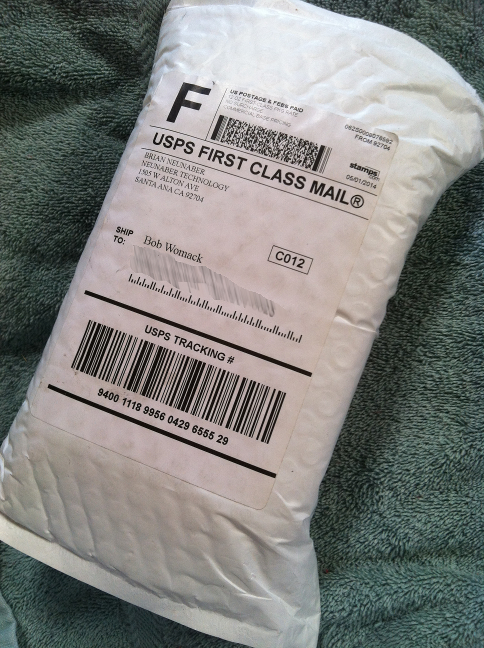
THE ORDER AND THE WAIT:
The unit is available directly from the manufacturer here in the USA. At the last minute before I ordered from the website I discovered the Neunaber eBay store where the pedal was offered with free shipping. It was a no-brainer. A quick “Buy-It-Now” and my pedal was on the way. There was no build time - the pedal came from stock. While I waited, I read the instruction sheet available on the website and downloaded the software to my computer to play with it. Zip! The package landed in my mailbox in four days.
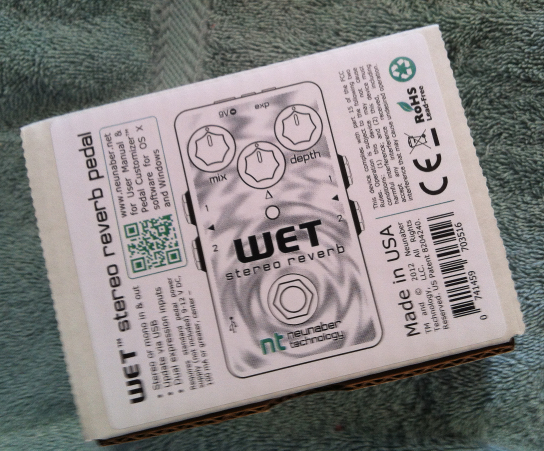
THE PHYSICAL FACTS
What’s in the box? The pedal, a Neunaber sticker, and a USB cable. That’s it. There are no instructions enclosed with the pedal. In an effort to be environmentally-friendly, the builder posts the instruction manual on his site where you can read, download, and/or print its four pages of glory at your leisure.
.
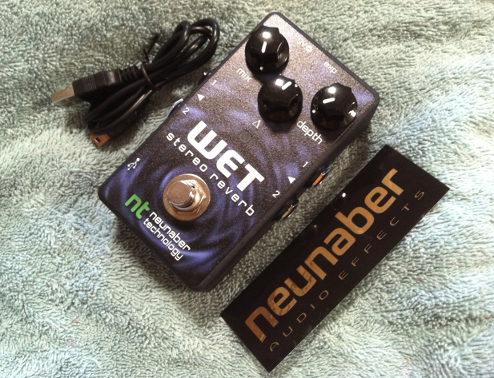
The pedal is a black, powder-coated, MXR-sized box with an applied front graphic. There are two inputs, two outputs, two expression jacks, a standard barrel-type 9v power jack, a micro-USB jack, a footswitch, an “ON” LED, and pots for mix, depth, and “delta.” There is not a battery option – this is an externally-powered pedal. you'll need to supply the power. The unit is quite light - without a battery it is a featherweight and the maker explains that he elected to not add dead weight. No problem. There are expression pedal and tap tempo functions available via two 1/8” jacks on the back of the pedal. Neunaber offers for sale on their site “smart” ´"µTap" tempo buttons for the echo program that take their power from the pedal and return a special voltage to set tap tempo. The µTap then displays that tempo via a blinking LED. In tap tempo mode, the front panel delay length control selects whichever subdivision of the tapped beat that you wish with the 1/1 division at far right and 1/5 subdivision at the left. You can look at the illustration of the Echelon front panel on the Neunaber website and possibly make wax pencil markings to guide your tweakage. The through, dry guitar signal is all-analog and is buffered with probably the nicest high-impedance buffer I have encountered for guitar. It is virtually transparent and indistinguishable from the un-buffered signal. Volume control character and touch sensitivity appear to be preserved through the pedal when I plug into my 5E3 Deluxe. This buffered architecture allows the reverb tails to continue to fade naturally when you switch the effect off.
THE FEATURES
When you power up the pedal and plug in, the unit yields the reverb effect right off the bat – the computer program isn’t needed to get going. If you do use the program, pedal programs load via USB in about five seconds, though the verify function can be switched off within the computer program allowing about a two-second load. Unless there is a signal being processed in the pedal there is no audible effect as the programs are changed and the front panel knobs are instantly effective in their current positions. That is important to remember – if you go from a long, long reverb with the depth control cranked up, to the delay program, the pedal will go to max repeats and instantly enter feedback, putting out a cacophony of noise. Just remember that. There are always dual programs loaded, one for mono operation, the other for stereo operation. The unit senses how you are plugged in via the output jack selection and selects the appropriate configuration. The “smart” jacks are set so that plugging a mono TS cable into output jack one selects the mono program. Plugging a stereo TRS cable into output two selects a stereo program. Plugging a pair of mono cords into outputs one and two selects the stereo program as well.
The pedal is programmed to output effects trails as standard when the bypass switch is stomped. That means you can play into the reverb and then turn it off without chopping of the reverb. That option can be switched to “no-trails” via the software. To review the various programs and options offered with the pedal I connected it up my laptop in the guitar room and changed the programs as needed. Be sure to read the user's manual and watch the two software explanation videos on YouTube HERE and HERE to learn to take advantage of the many features of the pedal, including extra knobs, 100% effect output for use in an amplifier's loop, and loading two different programs at once!
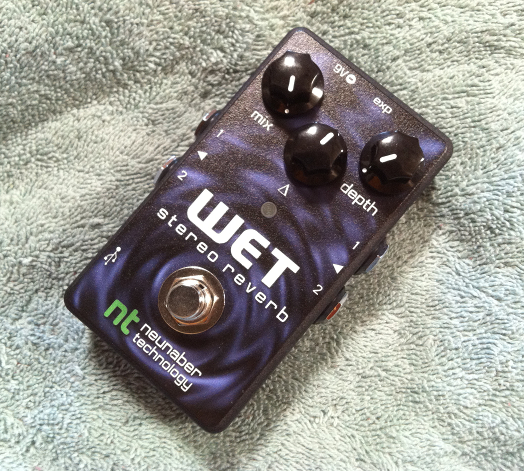
HOW IT SOUNDS, WHAT IT OFFERS
The Wet Reverb is lush and smooth. When I first set the controls so that it "sat" like a guitar amp reverb sits, its sound fell somewhere between a that of a Fender Deluxe Reverb and of a classic ‘70s Traynor reverb. The Traynor has a slightly longer, brighter reverb than the Fenders do, probably because its tank is driven by a 6BQ5/EL-84 tube. However, the pedal can do both subtle and surf via the depth control. At shorter reverb times it is a very pleasant, springy-sounding effect. As the reverb length is increased the effect moves into a smooth digital reverb type of sound. The designer added a pre-delay before the reverb signal that is intended to set the reverb effect slightly apart from the direct sound and thus prevent mush. The pre-delay works well. In the initial “Wet Reverb” pedal program the “delta” control is a tone control for the reverb only. Cranking it to the right yields a very lively sound. Pulling down to the left not only darkens but dampens the reverb a bit. The stock program is designed so that the reverb tails trail out after the effect is bypassed, for a natural sound. Options loaded from the program include normal, tail-less bypass, low modulation, and an option that replaces the reverb tone control with a modulation control. I've got to say that this reverb is never harsh or spikey. I keep using the term "smooth" because that is the overwhelming impression given by all the effects offered by this pedal.
The Wet Shimmer reverb runs the reverb recycle loop through a harmonizer, adding a nice smooth shimmer. The initial reverb feed isn’t run through the harmonizer so the shimmer appears with a slow bloom that seems more organic than directly-harmonized shimmers. Directly-harmonized shimmers can sound a bit like an organ synthesizer to my ears. This one avoids that effect. Of course, who knows whether it will pop up in a future edition of the Pedal Customizer software?
The Infinity Hold program stores and holds whatever signal happened in the last 200ms before the button was punched and mixes it with the direct sound. When used with an expression pedal, this program uses the pedal for both hold volume and trigger. It initiates the hold as you bring the expression up from the heel-down position and also fades it in. It also allows you to pull the treadle back to initiate the fade out of the hold with whatever tails are selected. When you select the option of Hold w/reverb, the program becomes VERY cool. This mode also infinitely holds the last 200ms that happened before stompage but it applies an adjustable reverb to the through signal so that you can blend the hold and through for ambient soloing. The effect behaves just like David Gilmour demonstrated with his pioneering but far more complicated delay rig he used when playing “Shine On You Crazy Diamond” solo in 2002 at Robert Wyatt's Meltdown concert.
The chorus and echo are just like icing on the cake. The Echelon Echo offers an advertised one second of delay that actually works out to be a little more than that. The tails are very pretty and sit well under the direct signal. There are options to allow stereo ping pong or stationary echos. When plugged into that jack near the mix control, an expression pedal actually controls the feed to the echo send, allowing you to duck out of the echo during busy passages then add the echo to an accent and duck out again leaving the material still echoing in the delay. That’s really nice.
And then there’s the Chroma Chorus. The Chroma provides a very nice, smooth, subtle effect with good stereo dispersion. As someone who always needs access to certain toys when he walks into the studio, it is great to be able to add that effect to my arsenal without any added expense, weight, or space!
CONCLUSIONS
So, how does it stack up? I thought you'd never ask. This is a marvelous, quiet, smooth reverb pedal without any obvious vices. Hidden under the hood are lots of features and four other pedals that add a whole lot of value for your money. I can use the reverb for recording and the echo for live work! I'd love to see Neunaber port the control program to iPhone and iPad, but perhaps that lies in the future. I bought this pedal as a reverb but can see that I’ll be finding many more uses for it as time goes on. Bravo, Neunaber, for a well-engineered pedal that is a great value for the pesos!
Update 04/18/2015 Since I wrote the original review a couple of things have happened: Neunaber have added more versions of the effects to the Pedal Customizer program: a shorter pre-delay reverb, a reverb plus echo, and a couple of feature additions for all the effects. The "reverb plus echo" appeared a week ago despite the fact that Neunaber moved on to a new version of pedal five months ago. It's nice to see a company that doesn't abandon the product when they move on to a new version.

NEUNABER AUDIO EFFECTS
= =
=






